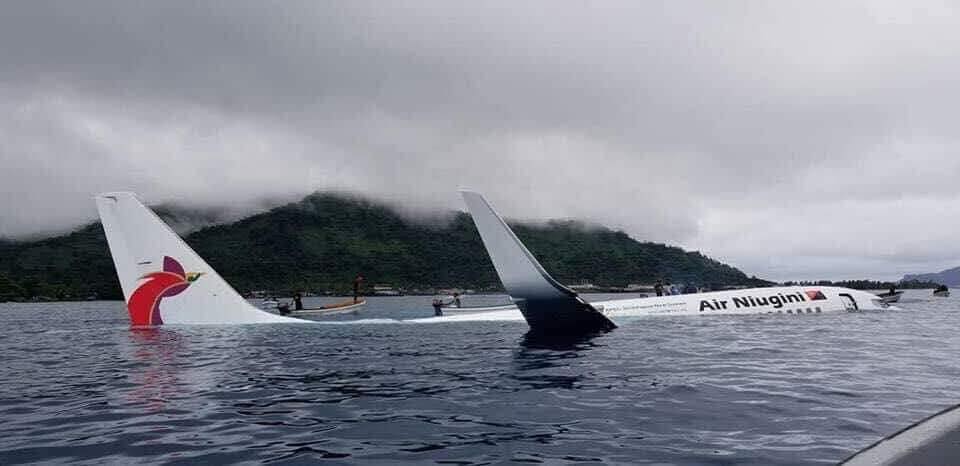
The disregard of auditory alerts by the pilots of PX73 contributed to the plane crashing in the waters of Chuuk in the Federated States of Micronesia last year.
This is one of the findings of the Accident Investigation Commission’s report into the crash of September 28th, 2018.
According to the AIC, a total of 13 Enhanced Ground Proximity Warning System (EGPWS) aural alerts were disregarded.
Nine months after the PX73 crash in Chuuk, the AIC has finally concluded its investigation and released the anticipated Report into the accident.
The AIC collected, researched and analysed information and figures from the Flight Data Recorder (FDR), Cockpit Voice Recorder (CVR), Enhanced Ground Proximity Warning System (EGPWS), as well as interviews.
According to the report, the pilot in command intended to conduct an Area Navigation approach to runway 04 at Chuuk International Airport and briefed the co-pilot accordingly.
The descent and approach were initially conducted in Visual Meteorological Conditions, but from 600 feet the aircraft was flown in Instrument Meteorological Conditions.
The recorded information from the Cockpit Voice Recorder showed that a total of 13 Enhanced Ground Proximity Warning System (EGPWS) aural alerts – seven “Glideslope” and six “Sink Rate” and a “100 feet” advisory – sounded after passing the Minimum Descent Altitude, between 364 feet and the impact point.
“The investigation observed that the flight crew disregarded the EGPWS alerts, and did not acknowledge the ‘minimums’ and ‘100 feet’ advisories or respond to the EGPWS aural alerts; a symptom of fixation and channelised attention,” read the report.
“Both pilots were fixated on cues associated with control inputs for the landing approach, and subsequently, were not situationally aware and did not recognise the developing significant unsafe condition of an increasingly unstable final approach.”
The report also found there was a lack of compliance with the airline’s operating procedures, and approach and pre-landing checklists.
“The Air Niugini Standard Operating Procedures Manual (SOPM) instructs a non-flying support pilot to take control of the aircraft from the flying pilot and restore a safe flight condition when an unsafe condition continues to be uncorrected, in particular an unstable approach when the aircraft is in IMC and below 1,000ft. However, the copilot as the non-flying support pilot did not do so. The pilot in command did not carry out the required go-around at the Minimum Descent Altitude.
“The report highlights that deviations from recommended practice and SOPs are a potential hazard, particularly during the approach and landing phase of flight, and increase the risk of approach and landing accidents. It also highlights that crew coordination is less than effective if crew members do not work as an integrated team.”
A video animation has been recreated from the data gathered in the investigation as well as a video recording taken by the aircrafts maintenance engineer who was seated in the cockpit jump seat.
This video is considered a critical piece in finding out the contributing factors of the crash.
“The importance of the imagery obtained from the video taken by the engineer in the cockpit jump seat cannot be understated. It provided clear pictures in real time of the cockpit environment and instruments that were not available from the CVR or FDR. Video imagery has the potential to save countless hours of investigation activity and greatly reduce the cost of investigations.”
A total of 17 recommendations have been made by the AIC with several having already been or are being addressed.
Commissioner Hubert Namani said this is an independent report and is separate from judicial and administrative proceedings to apportion blame or liability.
Twelve crew members and 34 passengers survived the crash with six sustaining serious injuries. One passenger, who was not wearing a seatbelt, died after suffering blunt force trauma head injuries. He was located three days after the plane was submerged.
The full report, video animation and recorded data can be accessed via the AIC website at www.aic.gov.pg
